2013 Powersports Business Executive of the Year: Keith Wandell
Wandell’s strengths flourish with H-D
Harley leader drives change from outsider’s point of view
When Keith Wandell stepped in as CEO of Harley-Davidson, Inc., on May 1, 2009, he was put in a unique position. Wandell was the first CEO hired from outside the company since 1981.
But it didn’t take long for the 21-year veteran of Milwaukee’s Johnson Controls to make a mark on his new company. In the past four years, Wandell has led Harley-Davidson to focus more on its brand, restructure its manufacturing and production and make headwinds into reaching a non-traditional demographic. His efforts have led the company to increase its income in each of the past three years and grow retail sales and motorcycle revenues in 2011 and 2012. Those accomplishments led to Wandell being named the 2013 Powersports Business Executive of the Year.
Focusing on the brand
Wandell joined Harley-Davidson in the midst of the recession, just eight months after the collapse of Lehman Brothers. Shortly after his tenure began, Wandell sorted through all the businesses and segments in which Harley-Davidson was involved and resolved to better focus the company’s resources on the core brand and those businesses that were thriving.
“Keith said, as he looked at all the businesses very quickly, ‘OK, where are we spending our resources? What are our strengths, and where are we spending our resources?’ And one he looked at was, ‘Where are we the strongest? What are we known for?’ You know, the Harley brand and what it means, and the core of that is the lifestyle, the experience, the engine, the look, the feel — he understood all of that,” said Tim Conder, a managing director at Wells Fargo Securities LLC who covers Harley-Davidson.
In October 2009, just five months after Wandell took the helm of Harley-Davidson, the company discontinued the Buell motorcycle line, laying off 80 hourly and 100 salaried employees. At the same time, the company also moved to sell MV Augusta, which had been purchased less than a year before Wandell came on board.
The Harley-Davidson brand, which has enough influence that many enthusiasts choose to tattoo it permanently on their bodies, is essential to the company’s continued success.
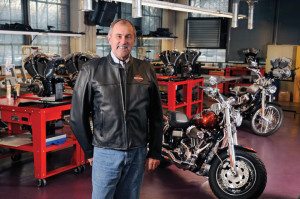
“The Harley-Davidson brand is absolutely the most important thing that we have in our company, and everything that we do has to be delivered in a way that’s true to that brand, that keeps the legacy living on, and the legacy is really all about personal freedom. It’s all about people wanting to, having the ability to express their own personal freedom through how they dress and how they customize their bikes and how they get together at these rallies and interact with one another,” Wandell told Powersports Business.
Restructuring manufacturing
Though sloughing off Harley-Davidson’s non-core businesses was a big step for the company and Wandell, it has not been the biggest in the past four years. Arguably, the restructuring Wandell has enforced at the manufacturing level has been the biggest difference, as it has changed much about the way the company does business.
When analyzing Harley’s former yearlong level-load production, Wandell drew on his two decades at Johnson Controls, a global manufacturer of automotive, power and building solutions. There, Wandell had served as president and chief operating office since 2006, overseeing international business and operations, especially those in manufacturing.
Wandell looked at how Harley-Davidson had been operating its manufacturing system and found flaws in the timing of production versus the timing of the peak riding season.
“We are a seasonal business, so it would be nice if we were able to sell the same number of bikes every day throughout the year, but that’s not the way it works. And so we have peak seasons, and we have low seasons, and I felt that it was very, very important that we implement a more flexible manufacturing process, so that we could manufacture bikes closer to when the demand was going to be there,” Wandell said. “In that way, we wouldn’t be loading our dealers up with inventory during slow periods of time and then having shortages, if you will, during high periods of time.”
Wandell found that the former process often left dealers without the right products at the right time. So he designed a new surge production process, which allows Harley-Davidson to ramp up production for the next riding season in mid-winter and decrease the work and the number of staff needed during typical off-seasons.
“We’re much, much closer to customer demand, and we’re able to get the bikes by and large to the dealers that they need and they want, when they want them, and that’s just going to be a lot better experience for our customer,” Wandell explained.
In changing production, Harley-Davidson has also been able to move the model year back. This past year, that meant the model year ran until the end of July, with new models unveiled to dealers in August. What that procedure did, Conder explained, is allow dealers to have more time to sell the current year models, as the new model launch was extended further into the riding season. For Harley, it also meant that orders for the riding season currently underway were taken in August, so the company could have a better idea of what it needed to produce for 2013.
“You’ve removed some of the reasons why the customer waits, you’ve created a reason for excitement in the off-season, and then you’re getting orders in October, November, December — not guesstimating what it is back in June for the next year,” Conder said.
He added, “It saves the dealer grief, it saves Harley money, and Harley and the dealer have better visibility into what the customer wants. It makes the whole process more efficient and effective. The surge gives them that ability to execute that.”
Though surge production provides benefits for Harley-Davidson and its dealers, the decision was not without critics. The company had to renegotiate union contracts at its plants across the U.S., laying off some and offering flexible surge shifts to others. Wandell says going through that process was one of the most challenging things he’s done during his tenure at Harley-Davidson.
“We’ve had to go through what we call a major transformation in how we design and develop products and how we manufacture, and it created a lot of change in people’s lives. It was difficult for a lot of people, and you never like to see that happen, but at the same time, you know it has to happen. It’s the right thing, so you just fight through it. But it’s certainly been … it’s been very challenging,” he said, adding that though it was difficult to deal with the personnel aspect of restructuring, changing the manufacturing process has been one of the best things that has happened within the company over the past four years.
Wandell realized, Conder said, that for Harley-Davidson to be viable even five years from when he began his post, it would have to change, and generous union contracts would have to go. This is where his being an outsider was especially beneficial for Wandell and Harley-Davidson.
“Clearly there was a lot of uproar about that, and I think it was easier for an outsider to come in and do that — to be the lightning rod for that — and with Keith’s experience in operations in manufacturing being his strength, he figured out what needed to be done and where they had to go, and he made the moves, so I think that those things are where he has contributed the most,” Conder said.
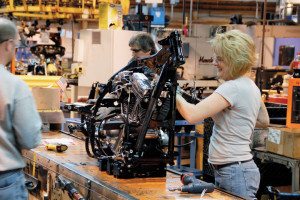
As union contracts were changed, much publicity surrounded Harley-Davidson employees and their feelings on the new process. To gauge the sentiment of the Harley staff, the company measures employee engagement annually through a Gallup survey. It’s important to Wandell and others within the company that the employees are engaged with the brand.
“There’s one thing that’s unique about this company — that even if an employee isn’t what you would call actively engaged, according to this survey, every one of our employees that come to work are engaged in the brand, and this is the thing that is really exciting about our company is that every employee is totally engaged in the brand, cares about the product that they build and wants to make sure that every customer has a great product and a great experience,” Wandell said.
Surge production was implemented at Harley-Davidson’s York, Pa., facility in January, which Wandell reported in the company’s first-quarter conference call in April went off “without a hitch.” The change is currently being put in place at the company’s Pilgrim Road facility in Menomonee Falls, Wis., the plant in Kansas City, Mo., and the facility in Tomahawk, Wis.
Harley-Davidson expects total restructuring to incur a one-time cost of $495 million, while saving $305 million in 2013, with an on-going savings of about $320 million, beginning in 2014. But the changes aren’t all about saving money, Wandell says.
“I look at it more as gains in efficiency and productivity. And I learned a long time ago in manufacturing you can’t save your way to prosperity,” Wandell explained. “What you have to do is make sure you’re always working on having the absolute most efficient, most productive processes in place, and then, creating a mindset around continuous improvement, where we come to work every day never satisfied where we are, but always looking for ways to improve.”
Reaching a new audience
Though Harley-Davidson has brand loyalists more than willing to permanently emblazon their bodies with the company’s logo, buy jewelry featuring the famous bar and shield and even host their weddings at Harley-Davidson dealerships across the country, the company’s traditional demographic is aging. As the average motorcyclist has grown older, so has Harley-Davidson’s traditional customer base, a fact that was beginning to concern investors a decade ago.
Before Wandell was hired to lead Harley-Davidson, the company in 2006 began a campaign to target what it calls outreach customers, those not in the typical over-35 Caucasian male category.
When Wandell started with the company, he saw the efforts that were being made in that area and asked that they be enhanced. What has followed is nothing short of a success story for any industry dealing with an aging demographic.
In 2012, for the fifth straight year, Harley-Davidson reported being the number one seller in the U.S. of new street motorcycles of all engine sizes to those ages 18-34, women, African-Americans and Hispanics, as well as Caucasian men ages 35-plus, according to Polk data. Altogether, the company’s sales to the outreach groups grew at more than twice the rate of sales to Caucasian men 35-plus.
The company also reported that it sold nearly twice as many new street bikes to 18-34-year-old Americans in 2012 than its nearest competitor. Harley-Davidson sold more new street bikes to women in 2012 than all other brands combined, and nearly half of all new street motorcycles purchased by African-Americans and Hispanics, respectively, were Harleys.
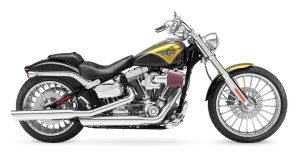
“In 2012, nearly four in 10 sales of new Harley-Davidson motorcycles in the U.S. were to customers who are new to the brand. Outside the U.S., two-thirds of sales were to customers new to the brand. And nearly six in 10 sales worldwide were to customers outside our traditional U.S. base of Caucasian men 35-plus. We believe our strategy to expand our reach to new customers and market segments in the U.S. and internationally — while also growing the base — holds tremendous opportunity for Harley-Davidson’s future,” Wandell said during the company’s first-quarter conference call.
Wandell credits the outreach in the U.S., in part to “wildly successful” dealership Garage Parties geared at women, and Boot Camps marketed to younger new riders.
“These were just different ways that we’re reaching out and trying to be inviting and inclusive of riders outside of what has typically been what we call our core rider,” Wandell told Powersports Business.
While Harley-Davidson is focusing on new customers in the U.S., it also is broadening its scope around the world.
“If you think about what our whole growth strategy was and is — and aside from focusing strictly on the Harley-Davidson brand — it was really to grow our outreach customers in North America at a faster rate than core, but then to grow international sales at an even faster rate yet. And the reason for that is because, quite frankly, we’ve been underserved in many regions of the world over the past,” Wandell said.
The company is well on its way to reaching a goal of opening 100-150 new dealerships worldwide by the end of 2014, with 93 stores added from 2009-12. Key areas of growth have been India, China, South Africa, Europe and the Middle East.
Despite worldwide expansion, Harley-Davidson remains committed to being American-made. Though the company has assembly plants in Brazil and India due to high tariffs in those regions, the parts for those units still come from Harley’s American factories, a fact that’s important worldwide.
“One of the questions I always ask our dealers and our customers — whenever I’m in Europe or Asia or wherever it is — is how important it is that the products are built in the United States, and I mean, to a person, they say it’s absolutely critically important because that’s really what the brand’s all about,” Wandell said.
A reason to celebrate
Becoming CEO, and later president and chairman of the board, of Harley-Davidson has been the “best experience” of Wandell’s life, he said.
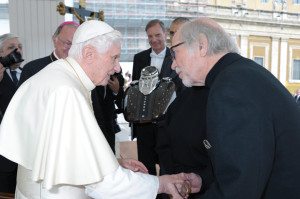
“You know the last thing I was looking for was another job, and this opportunity came along, and I decided to do it, and in retrospect, it was the best decision I ever made in terms of my career. The company is awesome, the people are awesome, the brand is awesome. Doesn’t mean that everything is perfect; doesn’t mean that we haven’t had a lot of issues — we’ve had a lot of tough things to go through. But at the end of the day, it’s just been an incredible experience for me,” he said.
Wandell has also learned through the years about the strength of Harley-Davidson’s dealer network.
“Since Day 1, I’ve been impressed with our dealer network. I think we probably have the strongest and best dealer network of any motor vehicle company in the world, and that includes automotive companies,” he said. “Our dealers are awesome, and they’re passionate, committed to the brand, completely dedicated. I think it’s a real strength for our company.”
Though Wandell has felt pressure to keep the legacy of the brand alive, having Harley-Davidson be such a well-known name in an enthusiast industry has its perks. This year Harley-Davidson is celebrating its 110th anniversary, a celebration that began in August 2012 with events in Milwaukee, Sturgis, S.D., and the Tibetan Plateau of China. Celebrations since then have occurred in Austria, India, New Zealand, Florida, Australia, South Africa and Mexico. During the European Celebration June 13-16 in Rome, Pope Francis will host a Bike Blessing in St. Peter’s Square for H.O.G. members.
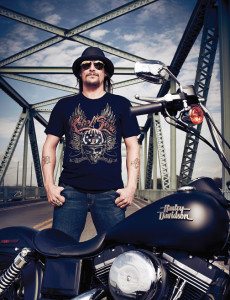
The 110th festivities will culminate in a celebration in Milwaukee over Labor Day weekend, Aug. 29-Sept. 1. Events include fan-organized rides, a parade, activities at the Harley-Davidson Museum, parties at area dealerships, a UFC fight, a custom bike show, street parties and more. More than 60 bands will play throughout the weekend, with Aerosmith, Toby Keith and Kid Rock booked as headliners. Wandell said it took an entire team a year and a half to plan the event.
“I think it’s very, very important that we mark every five-year milestone in the history of our company, give all of our riders and enthusiasts a chance to come together and celebrate those big events,” Wandell said.
Though Harley-Davidson doesn’t provide forward-looking sales guidance, the company does expect to ship 259,000 to 264,000 motorcycles to dealers and distributors worldwide in 2013, an increase of 4.5-6.5 percent from 2012. And Wandell is optimistic about what’s to come.
“I think that based on everything I know about the great people that we have here, the great dealers that we have and what we’ve done to bring new exciting products through the pipeline, which will start coming through — and what we’ve done around being more efficient and effective in manufacturing and working with our dealers to provide a great customer experience every time, every day, every place — I think we have a bright future with tremendous upside opportunities for our brand,” Wandell said.
2013 Powersports Business Industry Leaders:
(Click an Industry Leader’s name to view article)
Roy Olivier
Sam Yourd
Cristiano Silei
Sam Dantzler
Past Executives of the Year:
| 2012 | Rob Dingman, CEO, American Motorcyclist Association |
| 2011 | Scott Wine, CEO, Polaris Industries |
| 2010 | Jack Snow, CEO, Sheffield Financial |
| 2009 | Bennett Morgan, President & COO, Polaris Industries |
| 2008 | Eric Bondy, CEO, KYMCO USA |
| 2007 | Paolo Timoni, CEO, Piaggio Group Americas |
| 2006 | Michael Lock, CEO, Ducati North America |
| 2005 | José Boisjoli, CEO, BRP |
| 2003 | Jeff Bleustein, CEO, Harley-Davidson |
| 2002 | Tom Tiller, CEO, Polaris Industries |
| 2001 | Ray Blank, Vice President, American Honda |
| 2000 | Fred Fox, Chairman and Founder, Parts Unlimited |
Past Industry Leaders:
| 2012 | Bill Jenkins, Vice President of Sales, Kawasaki Motors Corp.; Chris Carlson, President, Sportech; Jim Woodruff, Partner, National Powersport Auctions; Keith Wandell, President, CEO and Chairman of the Board, Harley-Davidson |
| 2011 | Yves Leduc, Vice President and General Manager, BRP North America division; Steve Johnson, President/COO Tucker Rocky Distributing; Paul Vitrano, General Counsel MIC, executive VP ROHVA; Claude Jordan, CEO, Arctic Cat |
| 2010 | Chris McIntyre, President, EagleRider; Malcolm Smith, President, Malcolm Smith Motorsports; Laurn Rice, Vice President, ADP Lightspeed; Holger Mohr, CEO, Custom Chrome |
| 2009 | Philip McCaleb, President, Genuine Scooter Co.; Brian Etter, CEO, MAG; Christopher Carter, Owner, Motion Pro; Cliff Clifford, CEO, National Powersport Auctions |
| 2008 | Bob Miller, President, Helmet House; Jon-Erik Burleson, President, KTM North America; Mark Blackwell, Vice President, Victory Motorcycles; Dan Patterson, CEO, Lehman Trikes |
| 2007 | Gregory Pierce, General Manager, GE Money’s Powersports Division; Craig Shoemaker, President, Western Power Sports |









Nice job for HD, too bad new policies are strangling any aftermarket dealers, and with so many substandard parts used on the new machines , we will have 50 years of work if HD never produced another motorcycle.